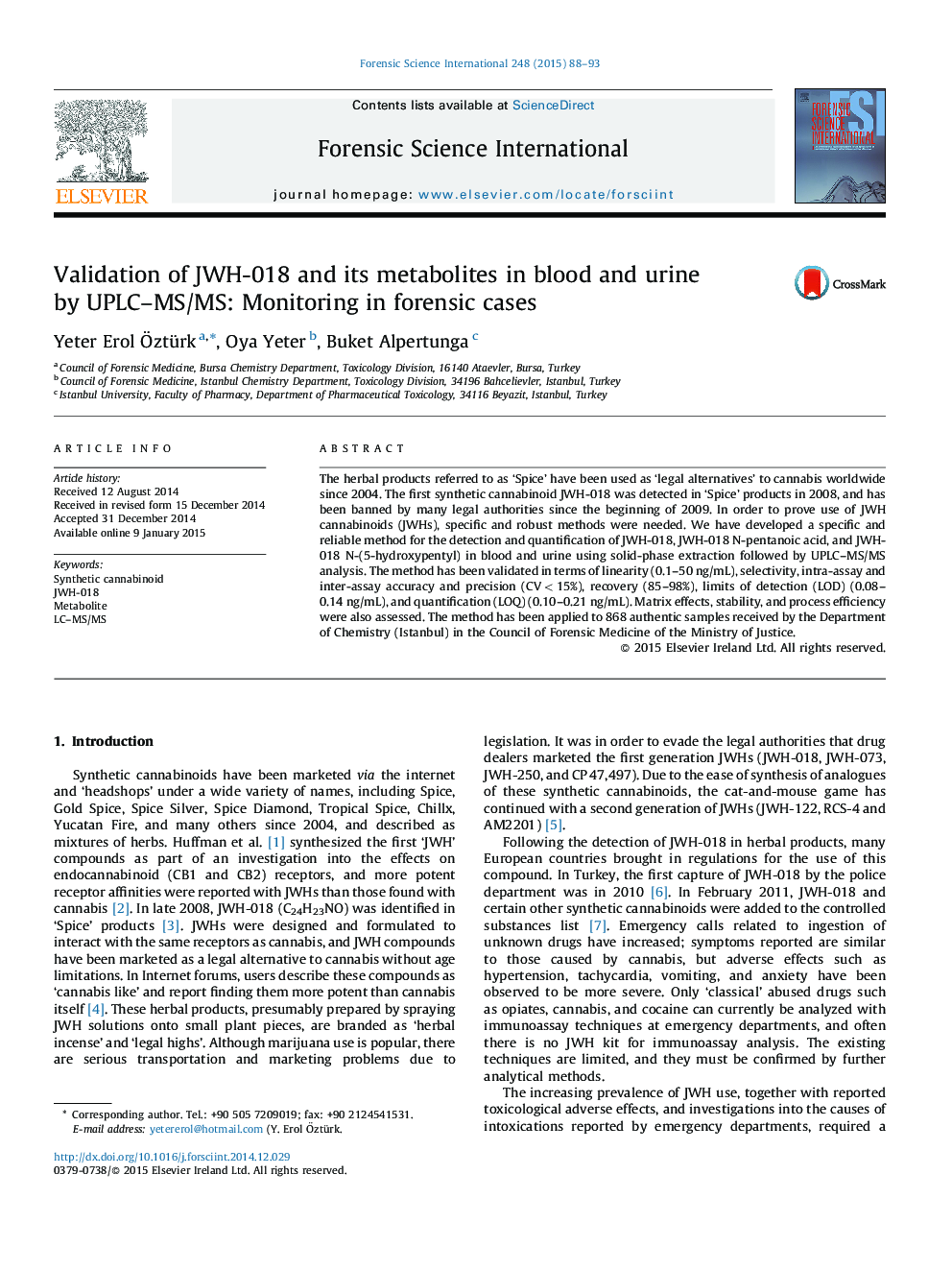| Article ID | Journal | Published Year | Pages | File Type |
|---|---|---|---|---|
| 95507 | Forensic Science International | 2015 | 6 Pages |
•JWH-018 and its metabolites analysis in blood and urine samples using UPLC–MS/MS.•Application to 868 authentic forensic samples from suspects of drug abuse.•The method is fast, accurate, selective and sensitive for forensic cases.•The initial method presented here describes the prevalence of JWH-018 use in Istanbul and its surroundings between 2012 and 2013.
The herbal products referred to as ‘Spice’ have been used as ‘legal alternatives’ to cannabis worldwide since 2004. The first synthetic cannabinoid JWH-018 was detected in ‘Spice’ products in 2008, and has been banned by many legal authorities since the beginning of 2009. In order to prove use of JWH cannabinoids (JWHs), specific and robust methods were needed. We have developed a specific and reliable method for the detection and quantification of JWH-018, JWH-018 N-pentanoic acid, and JWH-018 N-(5-hydroxypentyl) in blood and urine using solid-phase extraction followed by UPLC–MS/MS analysis. The method has been validated in terms of linearity (0.1–50 ng/mL), selectivity, intra-assay and inter-assay accuracy and precision (CV < 15%), recovery (85–98%), limits of detection (LOD) (0.08–0.14 ng/mL), and quantification (LOQ) (0.10–0.21 ng/mL). Matrix effects, stability, and process efficiency were also assessed. The method has been applied to 868 authentic samples received by the Department of Chemistry (Istanbul) in the Council of Forensic Medicine of the Ministry of Justice.
